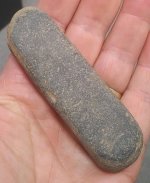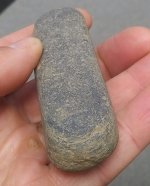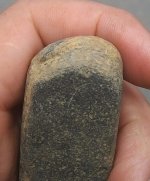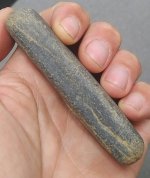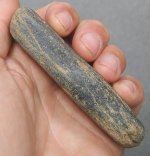romeo-1
Gold Member
I found this rock last night on a very well used native site. I've found hundreds of points and tools on this site over the years including stone axes, net weights, etc. This looks almost too perfect to be natural. I'm by no means an expert so welcome your opinions. Natural or otherwise? The sides feel polished and the ends look like they've been abraded but not completely sure. Thanks all!
Amazon Forum Fav 👍
Attachments
Upvote
0


